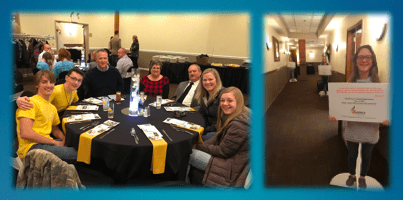
“Since 2004, Fairfield Prevention Coalition has served to convene and facilitate collaboration among community leaders around the challenge of youth substance misuse prevention,” said the coalition’s Executive Director Deborah Neyer. “We are a large suburban city and township north of Cincinnati, Ohio with a population of 65,000. The city and the township are united by a school district of 10,000 students spread throughout 11 schools.”
“We are in year 10 of our DFC support and the two biggest issues we face are engaging parents and achieving fiscal sustainability,” said Neyer. “We have a thriving community coalition and incredible youth-led prevention and peer mentoring involvement but have struggled for years to engage parents in our mission. As staff, we see the hard work that our coalition’s youth put in every year. However, unlike in sports and music programs, the hard work of peer to peer prevention is often misunderstood or overlooked. This year we decided to host a showcase of youth-led prevention for our community. We invited 200 guests to attend a dinner showcase at a local venue (charging $10 per person). We got a community sponsor to help cover a small amount of the cost and the rest came from our Drug-Free Communities (DFC) funding. We worked with our youth-led prevention groups in grades 7-12 to prepare them to showcase the skills they learn in our program and the activities they use to positively influence their peers.”
“The skills and activities included in the showcase included recognizing “sparks” (40 developmental assets), Botvin Life Skills training, pHARMing Effects – peer to peer medication safety training, Family Feud Game Show (vaping, marijuana, mental health and positive social media education) and videos from current and alumni participants,” said Neyer.
“We served community members and parents a great dinner and the youth loved showing adults their skills and talents,” said Neyer. “Adult community coalition members who had participated in coalition activities for years seemed to finally understand the flow of what we teach the youth from the start of the program to the end and how it impacts them moving into their college years. We did not get a lot of donations, but the event helped people understand the importance of the work of the coalition. We got several new subscribers to our newsletter and social media platforms.”
“We are a very active, organized community coalition with a membership of 25,” said Neyer. “Our youth coalition is one of the most active in the state of Ohio and has a membership of 150. Together, we have harnessed over 50,000 in-kind volunteer hours and reduced youth substance misuse by 50% since 2008.”
“In addition to using the Strategic Prevention Framework (SPF) to guide community prevention processes, we have created a youth-led prevention program encompassing peer mentoring, peer to peer education and youth led prevention initiatives that span grades 7-12,” said Neyer. “We use the SEARCH Institute’s 40 developmental assets as our framework and Botvin Life Skills as a curriculum in our skill-building. Over the last decade, we have implemented skill building and leadership training for over 11,500 youth.”
“Many coalitions struggle with engaging youth,” said Neyer. “We started our youth coalition by holding a Freshmen Youth Summit in 2007, because our data showed that this is the time period in which youth were making decisions about whether they wanted to use drugs. Teachers recommended 2-3 students with leadership potential and they attended a full day, off-site leadership training. During this training, we played games, built leadership skills and conducted listening sessions with the students. We shared the data with the students and listened to their insights on the root causes. We used the acronym CAMP (Community Norms, Access/Availability, Media, and Policies and Practices) to guide this discussion. By the end of the day, many youth were excited to join in tackling the issue. This began our youth coalition.”
“This program has expanded into middle schoolers and freshmen receiving a lot of leadership training and high schoolers mentoring middle school leaders. Freshmen and high school students also design, implement and evaluate initiatives that feature the seven environmental strategies. We find that adults and peers alike respond very well to hearing passionate young leaders talk about positive lessons, practices and policies.”
“Despite our success with the Celebrate Youth Event, we still struggle to engage parents,” said Neyer. “We will do the event again and will keep parents informed through our monthly newsletter and social media. In addition, during our shelter in place time we are publishing one short social media video per day featuring ways that parents can protect and connect with youth (e.g. 40 developmental assets, Trauma Informed Care, Minimizing Access and Availability).”
“We have been writing grants and having community conversations with key leaders for over a year to secure operations funding,” said Neyer. “In that time, we were awarded some support from the city and from the schools. We are thrilled that we were also awarded the STOP Act Grant this year. This is not as large as the DFC grant but, together with our community support, it will enable us to continue the work.”
“My only advice to other coalitions is to keep trying,” said Neyer. “Being responsible for this has probably been the most stressful professional endeavor of my life and I have had a steep learning curve. There are many great resources through CADCA and through the web resources: Coalitions Work and Community Development Professionals (CDP). However, for us sustainability seemed to boil down to seeking out and listening to experts and perseverance in unlocking the resources available in our community.”


